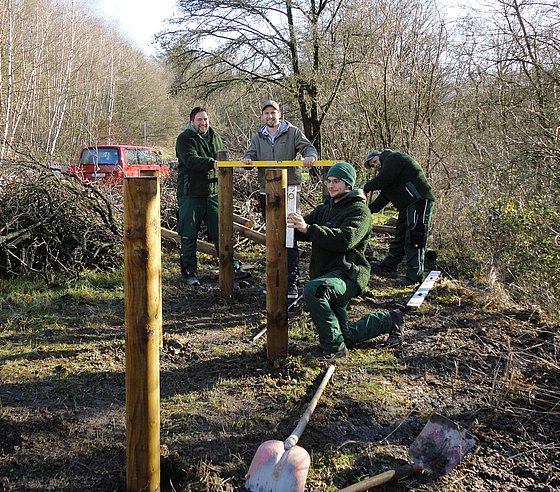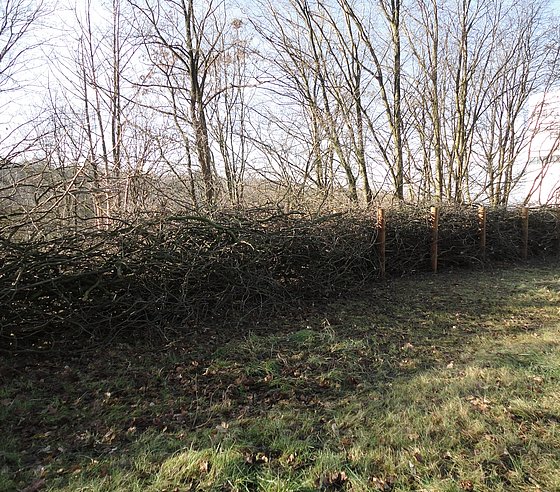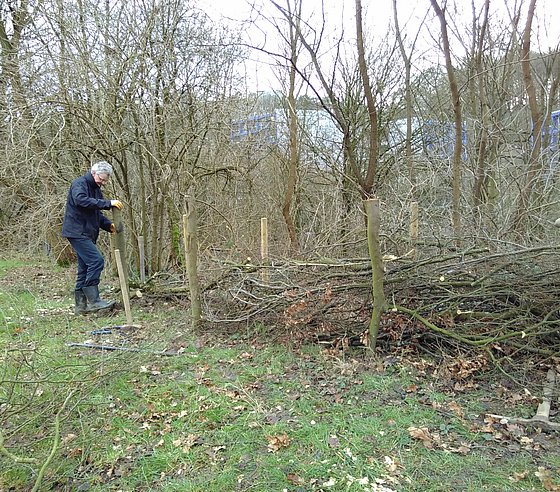


January - Benjes hedges: turning deadwood into habitat
Benjes hedges are made up of dead twigs and branches, providing a unique habitat for animals and plants. Named after Hermann Benjes, a landscape gardener who, in the 1980s, described their traditional use in structuring open agricultural landscapes, they are a valuable addition to any garden.
These hedges are said to 'grow by themselves' from the seeds of native shrub species. To this end, prunings and brushwood are loosely piled up in strips. These strips provide shelter for birds and small mammals, and the seeds contained in their faeces are intended to slowly grow back into shrubs, creating a living hedge. Desirable shrub species provide fruit as food for animals and include elder, hawthorn and blackthorn. However, as the process of forming a real hedge takes several decades, initial planting can support this process.
However, the process is more complicated than it sounds. Unwanted tall plants, such as nettles and brambles, can delay or prevent the growth of shrubs. Nevertheless, wooded areas provide habitats for birds such as those that breed in hedgerows, as well as for small mammals such as hedgehogs, and for many insects and amphibians — provided there is water nearby.
Benjes hedges on the Grifflenberg campus
Part of the university campus is covered by buildings, roads and paths. However, around half of the site — 112,400 square metres — is green space. This half makes an important ecological contribution.
The main reason for the "Benjeshecken" on the Grifflenberg campus is to create a habitat for animals. At the same time, they are an effective way of using prunings, also known as "dead wood". Various types of Benjes hedges can already be seen on Gaußstraße, behind Building W, and more are being created. These branch piles differ from those found in open landscapes in that the strips are shorter and are sometimes bordered by buried stakes.
